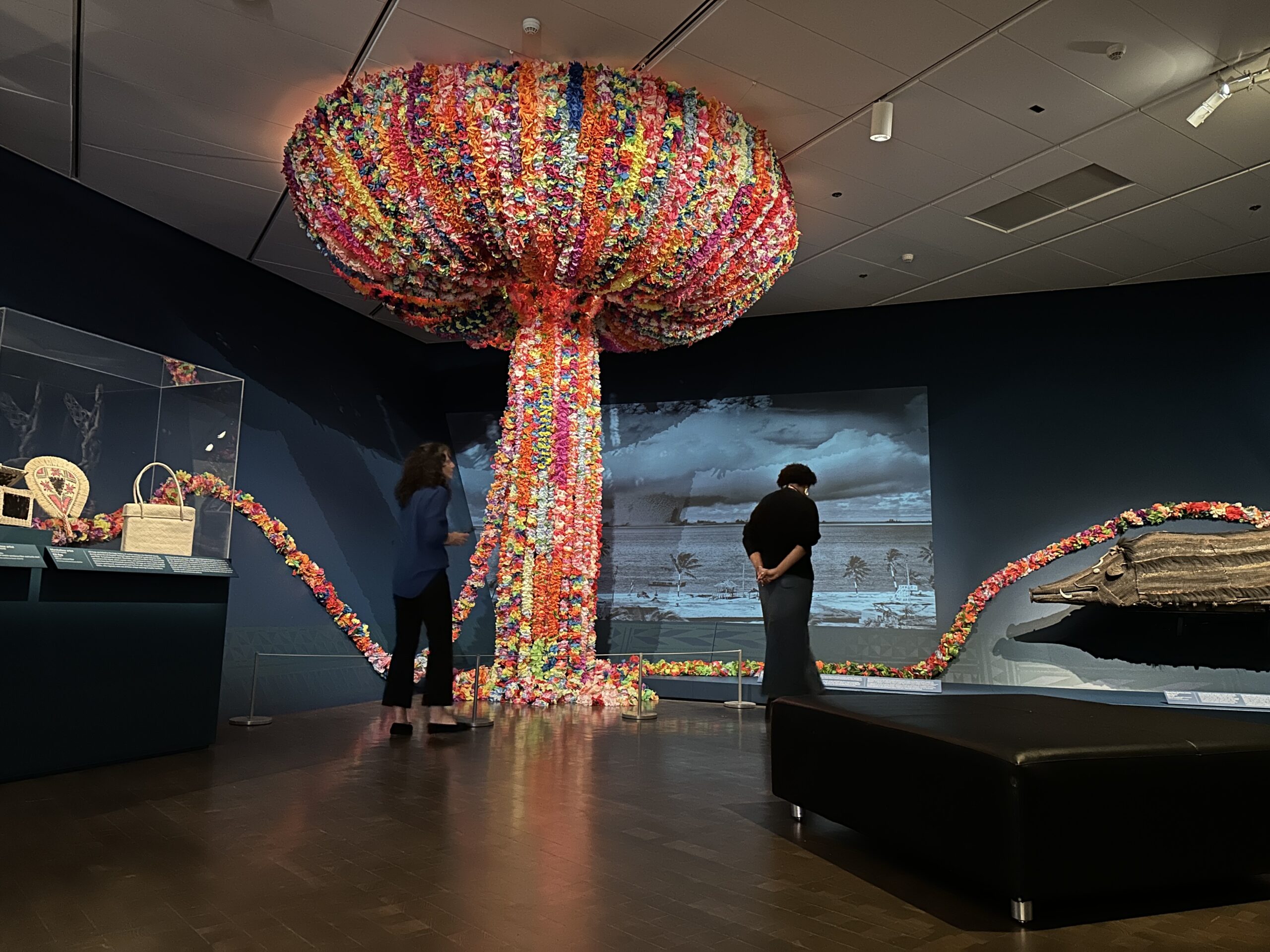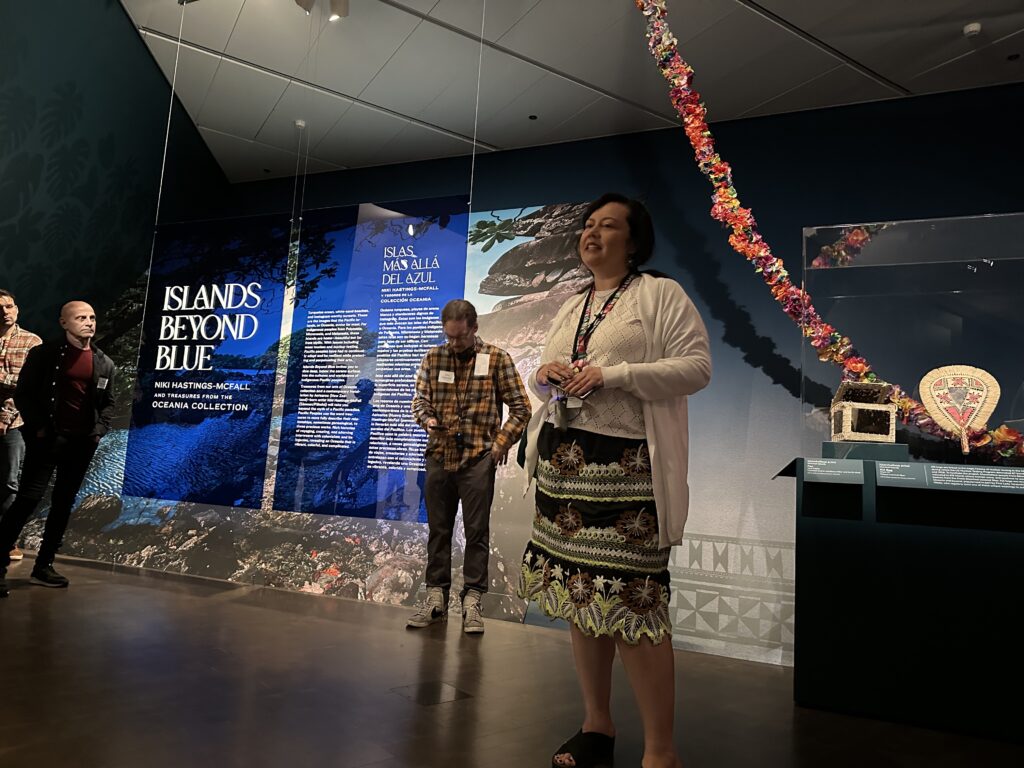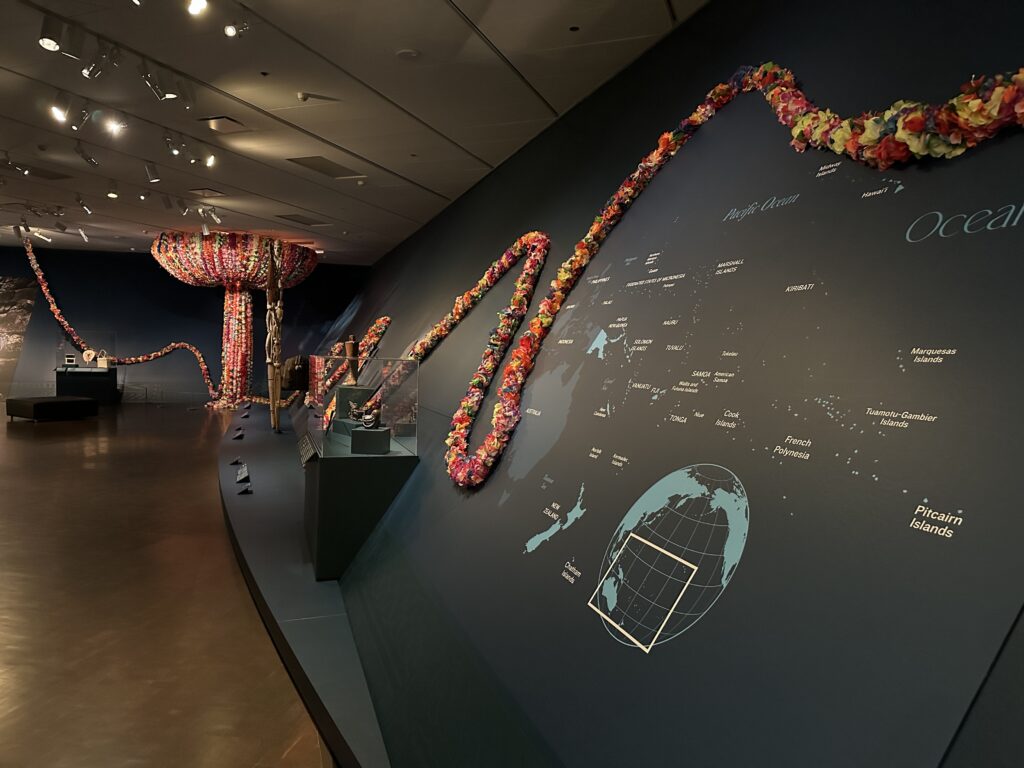
Back in 2016, the Denver Art Museum took down collections from three of its most well-known areas: the Arts of Africa, Arts of Oceania and the Modern and Contemporary Galleries.
The galleries in the museum’s Hamilton Building galleries were closed as construction around the campus took place. This week, the reimagined galleries reopened to the public.
Since the Denver Art Museum acquired its first piece from Oceania more than 80 years ago, the collection has grown to about 1,000 pieces from all of the major island groups. Emelihter Kihleng is the curatorial fellow in Native arts as the gallery reopens with a new temporary exhibition, “Islands Beyond Blue: Niki Hastings-McFall and Treasures from the Oceania Collection.”
Kihleng brings personal insight to the project, including one of language. In the Pacific Islands, the people tend to refer to works as “treasures,” as opposed to “objects.”
“Because the word ‘objects’ doesn't really convey the essence or what the objects or treasures really mean to us. Because for Pacific peoples, the treasures, oftentimes we have genealogical links to them, or they're part of our, I guess you could say, DNA in a way,” Kihleng said. “Or we trace our genealogy to sometimes these objects and sometimes they're very sacred. So we call them treasures.”
Kihleng selected 25 treasures for this installation, and she was also responding to the wall angles of the space when she selected an artist to create a new work for the reopening.
“I immediately thought of Nikki Hastings-McFall, who's an Aotearoa-born artist” Kihleng said.

Aotearoa is the contemporary Māori language name for New Zealand.
When Hastings-McFall received the first message about creating a site-specific piece for the Denver Art Museum, she said she initially thought it was spam.
“But then I thought, ‘No, it's That's a little bit too, sort of real, to be a joke.’ So, yeah, and it sort of went from there,” Hastings-McFall said.
Hastings-McFall used technology to overcome the logistical obstacles of creating a work and having it installed in a space she never even visited.
“It's very interesting, and it's quite nerve-wracking, sort of flying by the seat of your pants as it were,” Hastings-McFall said. “They just sort of basically put me on a monitor, it was just wheeled round, like a great giant head, really pointing me in various directions, and it was [a] quite, very disembodied feeling.”
Hastings-McFall wanted her piece titled “No Man Is An Island” to be a conversation across time and geography with the other pieces in the exhibition. It is built using hundreds of synthetic leis.
Stepping into the space, the first thing that strikes the viewer is the color, the range of color, before you can even decipher what the materials are and then see what it really is that they’re looking at.
Hastings-McFall describes it as a caricature of an atomic mushroom cloud.
“That references the nuclear testing within the Pacific, which has had a huge far-reaching effect upon basically a third of the Earth's surface. And, still does to this day, you know?” Hastings-McFall said. “The colors were kind of a rainbow to me that sort of spoke to our own — New Zealand's own — rainbow warrior.”
Hastings-McFall said she hopes that her piece is intended as a unifier and a thought provoker, “or even just to provoke an emotion or a feeling of some sort. That would be, that would be lovely.”
Kihleng also hopes the exhibit will have an impact on visitors.
“I wanted to say that the Pacific Islands or Oceania, [is] so much more than a place to go on holiday, especially for an American or European audience,” Kihleng said. “I hope that the exhibition will show that the Pacific Islands are very diverse and there isn't just one narrative, and we're not all the same. And that it's an area rich with different kinds of art.”
Entry to the Hamilton Building’s reopened galleries is included in the Denver Art Museum general admission.









